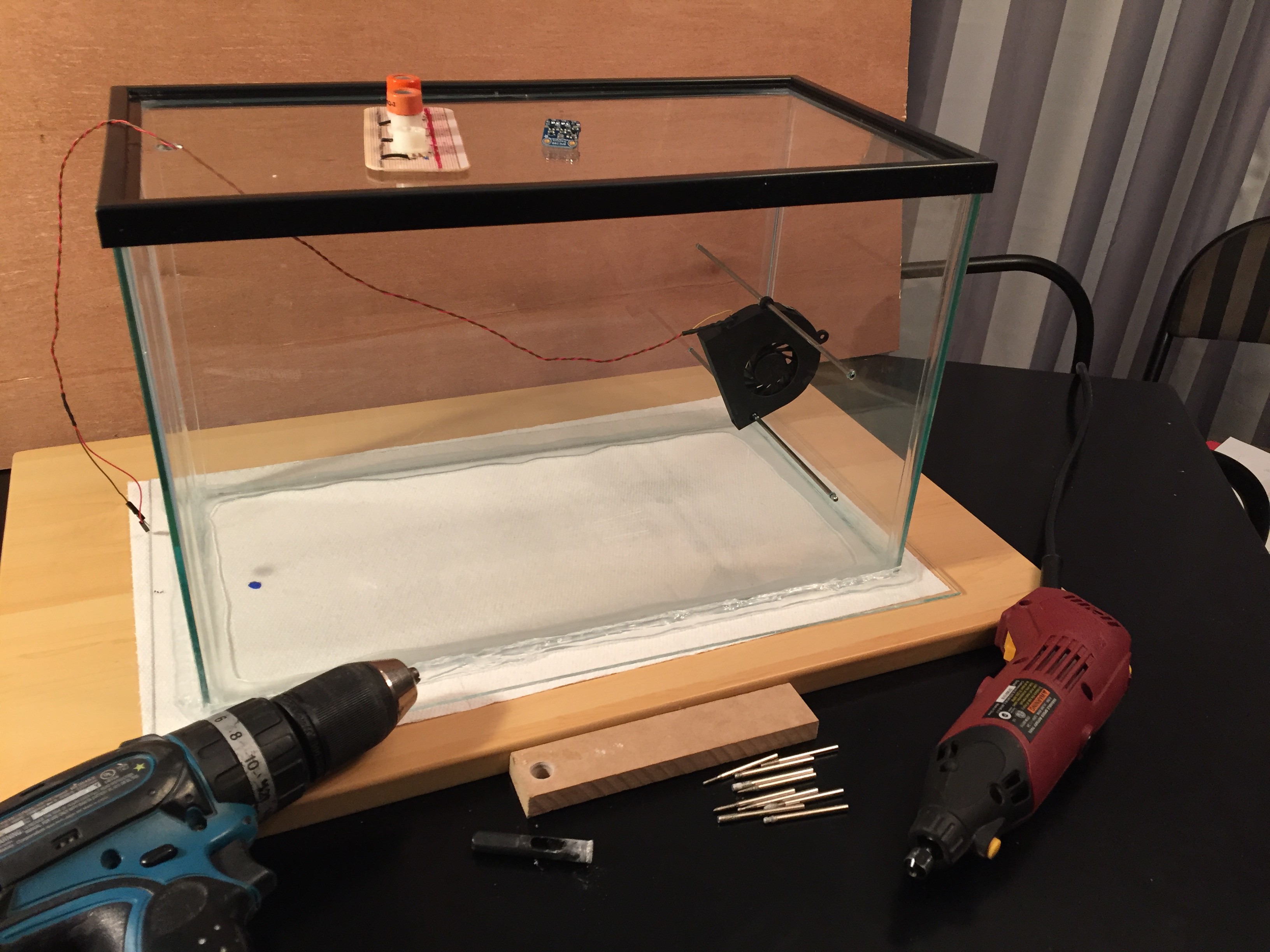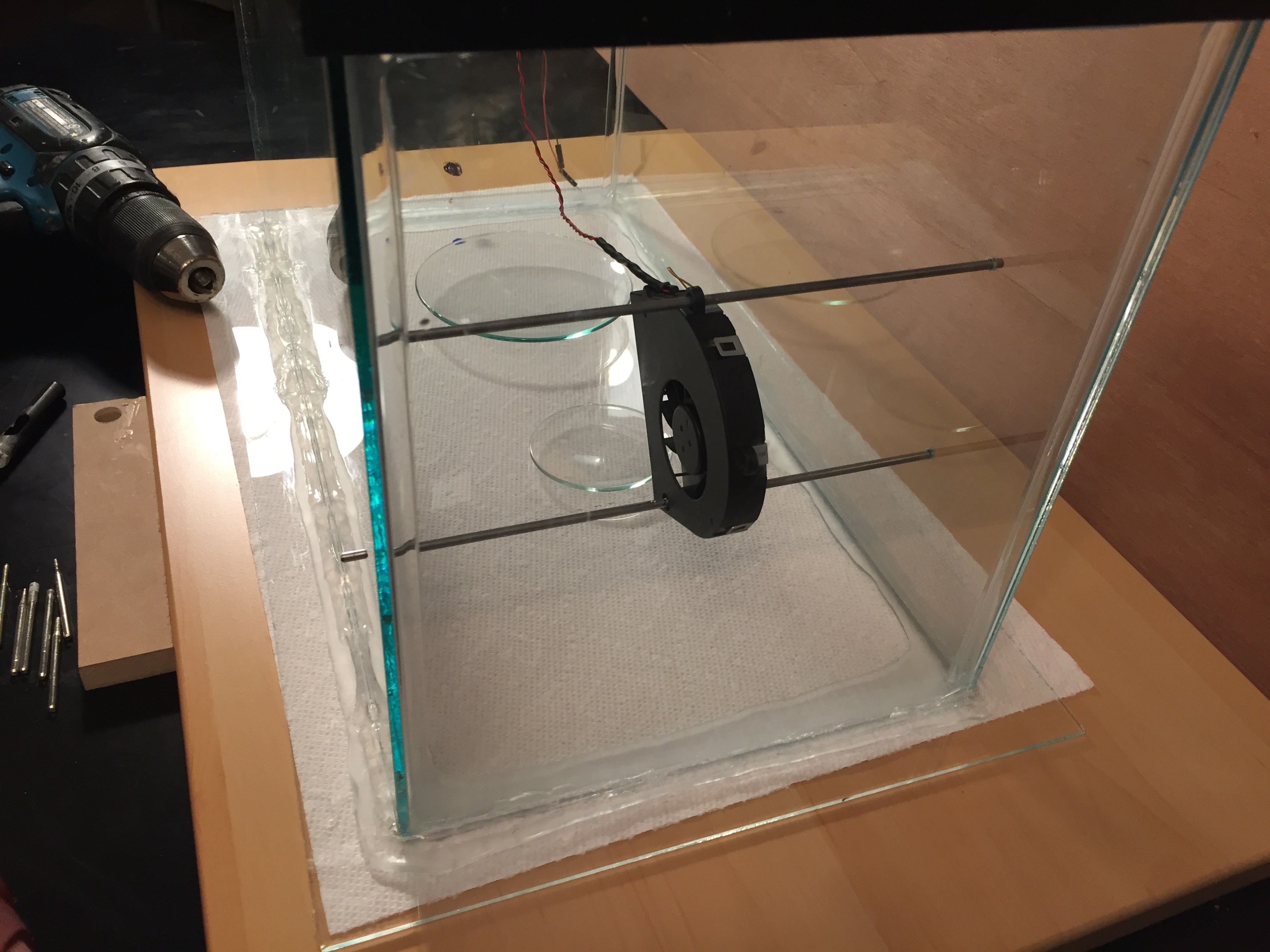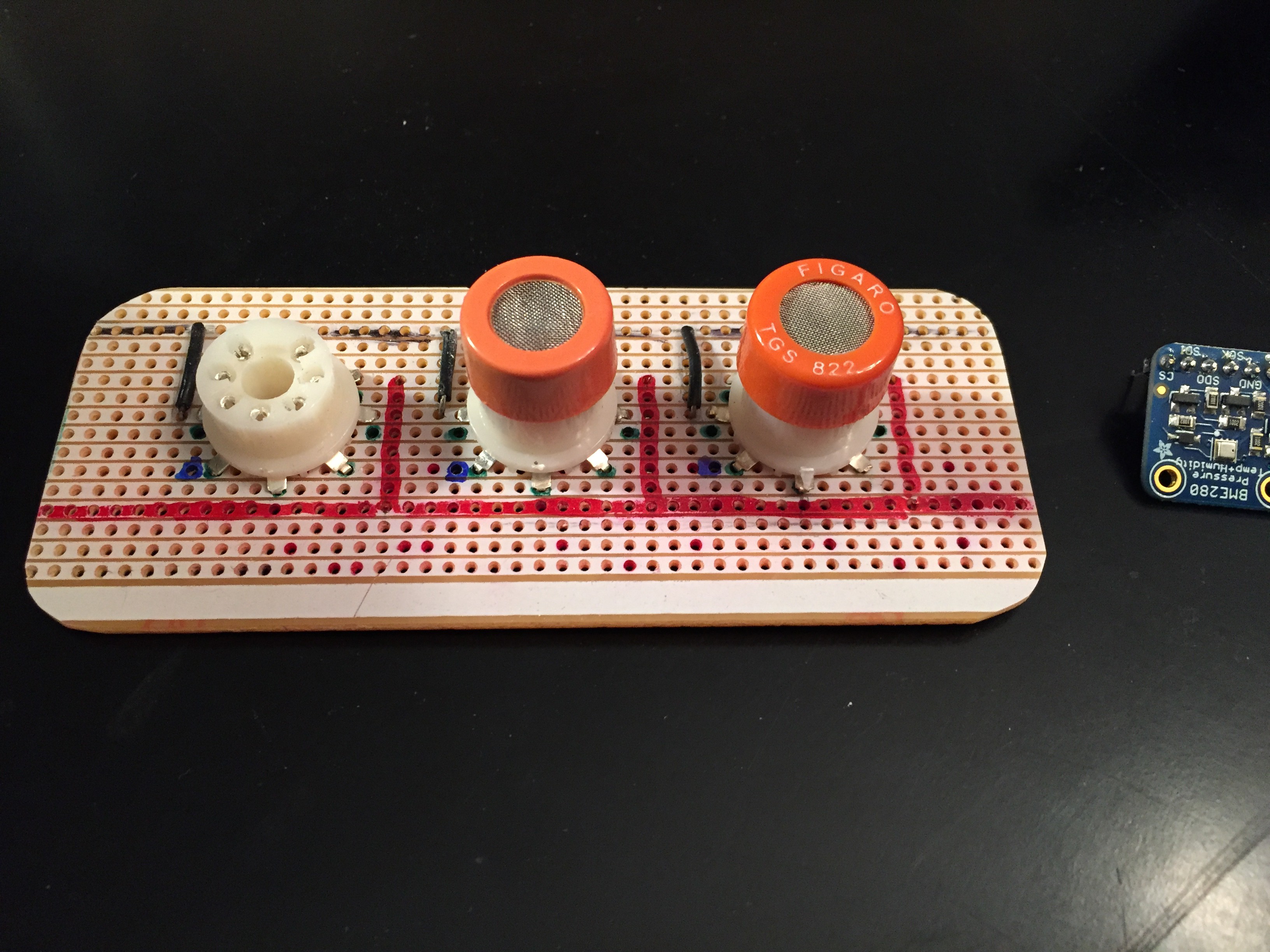Semiconductor gas sensors are relatively inexpensive but they come with one caveat - you have to calibrate them with known concentrations of the gas(es) you are using the sensor to detect. It is one thing to detect if a gas is present but if determining its actual concentration is the objective (which it certainly is, in this instance) then we need to test each sensor against different known concentrations to determine their sensitivity to to our target gas (acetone) as well as the relationship between sensor values and gas concentration.
For this chamber, I have a number of design considerations:
- Needs to be air tight
- Temperature controlled
- Made from materials that are non-reactive (and minimally absorbent) to acetone.
- Reasonable size - big enough so that it is convenient to measure out acetone to place in chamber, but not so big that controlling temperature, etc., becomes a burden.
- Include desiccant to maintain low humidity (non-reactive to acetone and ethanol)
- Environmental sensors to determine temperature humidity and atmospheric pressure
- Continuous air circulation within chamber
Presently, I am finishing a chamber design and build that uses an inexpensive glass aquarium (I did remove the upper plastic rim since I believe it is made from ABS - very absorbent to acetone) and mounting sensors and fan inside, along with a watch glass for the evaporation of acetone. In addition, a Calorique heating element external to the tank and insulation surrounding the whole structure.
The sensors that I am currently including are: BME280 (for temperature, humidity and barometric pressure), MQ 3 gas sensor, MQ138 gas sensor and TGS822 gas sensor.
The chamber has a silicone gasket (fabricated) to seal it. Wiring is routed into the tank via holes drilled in the glass and sealed with silicone.
Below are a few pictures of my progress so far:



Keep tuned, I'll have additional updates tomorrow!
 Tom Meehan
Tom Meehan
Discussions
Become a Hackaday.io Member
Create an account to leave a comment. Already have an account? Log In.